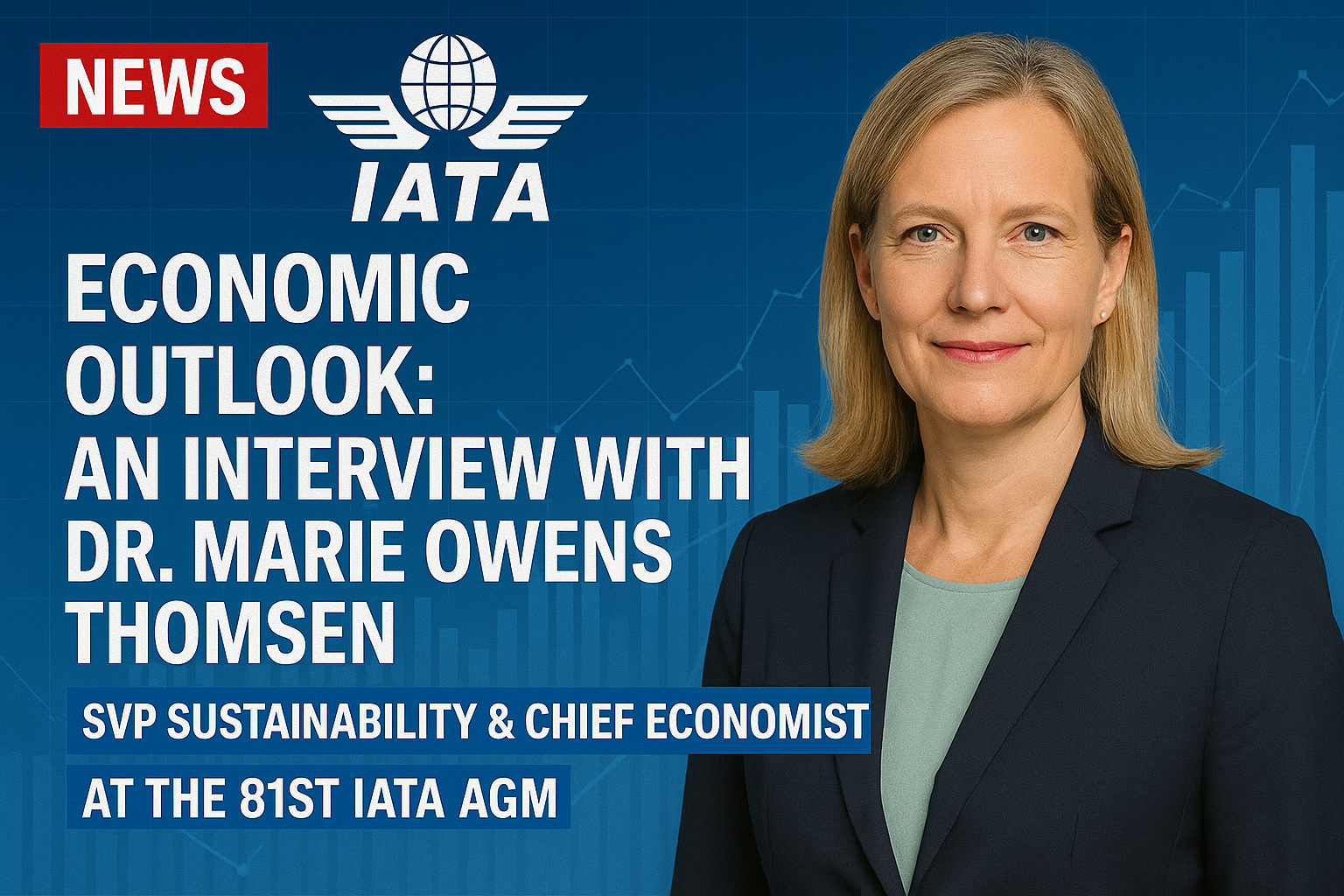In a candid conversation at the IATA 81st Annual General Meeting, Dr. Marie Owens Thomsen, Senior Vice President of Sustainability and Chief Economist at IATA, delivered a nuanced view of the airline industry’s economic outlook. While growth persists, deep structural imbalances and capacity constraints cast a long shadow.
Global Slowdown and Trade Tensions Weigh Heavily
“The dominant force is definitely the slowdown,” Dr. Owens Thomsen stated, highlighting how international trade policies remain a critical variable. Slower economic growth, she warned, is inherently detrimental to aviation, a sector tightly interwoven with global commerce.
However, the outlook isn’t entirely bleak. One positive development comes from the energy markets. “Lower oil prices help reduce costs for airlines,” she said, though she tempered expectations by pointing out that “jet fuel remains more expensive than crude oil, so the cost relief is only partial.”
Demand Soars, But Planes Are Scarce
Despite macroeconomic headwinds, passenger demand remains robust. The industry is projecting a 5.8% increase in Revenue Passenger Kilometers (RPKs) — a strong signal of consumer confidence and travel appetite. “That’s a pretty healthy clip,” she affirmed.
Yet, growth is running into hard limits. “The industry is short of some 5,400 aircraft,” Dr. Owens Thomsen revealed. “It will take three to five years to sort that situation out — and that’s before considering the impact of potential trade tariffs on the aircraft supply chain.”
These constraints create bottlenecks, limiting the industry’s ability to scale and capture the full benefit of strong demand.
Profit Margins Holding — For Now
In spite of these pressures, the industry is managing modest gains. IATA forecasts $36 billion in net profit for 2025 — a 3.7% net profit margin, slightly improved from 2024. “It’s still an improvement, and a testament to the resilience of airlines,” Dr. Owens Thomsen noted.
The Uneven Global Playing Field
But regional inequality remains a glaring issue. “There’s a huge difference in net results between regions,” she said, drawing particular attention to Africa. “It’s very hard to defend that we’ve somehow allowed Africa to become the place where aviation is not gaining traction — well below its population share and economic potential.”
The root cause, according to Dr. Owens Thomsen, is fragmentation. “If the world’s governments truly recognized that airlines don’t just contribute to GDP growth — they actually accelerate it — we’d see more unified, supportive policies. Air transportation boosts virtually all other sectors.”
Toward a More Balanced Future
The path forward, she argued, requires collaboration, harmonized regulation, and investment. “If we see aviation as a growth accelerator rather than just a cost center, then motivating change becomes far easier.”
Dr. Owens Thomsen’s message was clear: While the airline industry continues to perform under pressure, the next chapter depends on breaking down regional disparities and treating air transport as a core driver of global prosperity.





